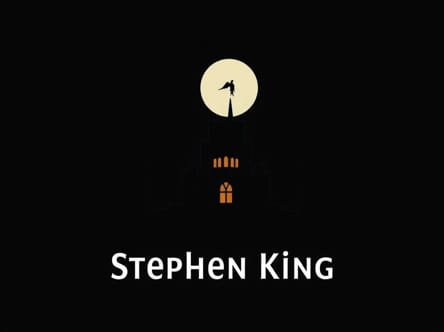Among Stephen King’s many short stories, ‘The Night Flier’ stands out as a chilling, atmospheric tale that fuses horror and mystery with a touch of noir. First published in 1988 in Prime Evil: New Stories by the Masters of Modern Horror and later included in King’s own collection Nightmares & Dreamscapes, the story introduces readers to a disturbing world of supernatural murder and relentless journalism. The premise revolves around a bloodthirsty killer who flies a black airplane and lands at rural airstrips, leaving drained corpses behind. This vampire thriller has since gained cult status, especially after its film adaptation in the late 1990s, and remains a favorite among King’s horror aficionados.
Plot Overview and Key Characters
Richard Dees – The Relentless Reporter
The central figure in ‘The Night Flier’ is Richard Dees, a jaded and cynical tabloid journalist working for the sleazy Inside View magazine. He’s the kind of man who thrives on gore, scandal, and sensationalism. When he catches wind of a bizarre string of murders at isolated airfields, each crime scene involving a drained corpse and strange bat-like prints, he knows he’s stumbled upon a juicy story. Driven by ego and greed more than ethics, Dees begins to pursue the elusive killer, known only as the Night Flier.
The Mysterious Killer
The antagonist is a vampiric figure who travels in a black Skymaster airplane, complete with gothic touches like soil in the cargo hold a classic nod to Dracula mythos. The Night Flier’s identity is never fully revealed, which adds to the story’s haunting effect. He appears to be a modern vampire adapting ancient habits to modern technology, using airplanes instead of carriages and rural airfields instead of crypts.
Atmosphere and Horror Elements
King’s hallmark in ‘The Night Flier’ is the palpable atmosphere of dread and tension. The story mixes traditional vampire lore with a contemporary setting, turning the isolated airstrips into eerie, lifeless battlegrounds. Each stop along Dees’ pursuit becomes more macabre than the last. Through vivid descriptions and immersive narration, King builds a sense of unease that lingers long after the final page. Readers are not just told about horror they are made to feel it.
Psychological Horror
Another strong element in the narrative is the psychological unraveling of Richard Dees. The deeper he digs into the story, the more he seems to lose his grip on reality. This descent into obsession and paranoia is central to King’s portrayal of how evil corrupts not just physically, but mentally. Dees becomes a mirror of the monster he’s chasing, blurring the line between hunter and hunted.
Film Adaptation
In 1997, ‘The Night Flier’ was adapted into a horror film directed by Mark Pavia, with Miguel Ferrer starring as Richard Dees. The film stays relatively faithful to the source material while expanding the story’s mythology. It received mixed critical reviews but has since gained a cult following, particularly among Stephen King fans who appreciate atmospheric horror. The low-budget aesthetic actually plays to its strength, enhancing the bleak and claustrophobic feel of the original story.
Notable Differences in the Movie
- The film introduces a new character, Katherine Blair, a younger reporter who serves as a moral counterpoint to Dees.
- The Night Flier is depicted more directly in the film, complete with grotesque prosthetics and special effects.
- While the short story is more ambiguous, the movie leans into explicit horror and gore, offering a more visceral experience.
Themes and Symbolism
Media Ethics and Exploitation
One of the most powerful themes in ‘The Night Flier’ is the ethical ambiguity in media. Dees represents the darkest side of journalism he’s not interested in truth or justice, only in headlines that sell. His pursuit of the Night Flier becomes symbolic of how sensational media preys on real human suffering. In this way, King criticizes not just the supernatural monster, but the very human one behind the pen and camera.
The Duality of Man and Monster
Another major theme is the duality between man and monster. Dees and the Night Flier are two sides of the same coin. Both are predators in their own right: one drinks blood, the other feasts on trauma. King leaves readers to ponder which of the two is truly more horrifying. This subtle yet sharp commentary elevates the story from pulp fiction to psychological depth.
Legacy and Cultural Impact
‘The Night Flier’ may not be Stephen King’s most famous work, but it holds a special place in the horror canon. The combination of classic vampire tropes with modern investigative journalism created a fresh narrative that still resonates decades later. Its eerie tone, morally ambiguous protagonist, and minimalist yet effective horror structure showcase King’s range as a storyteller.
The story also helped cement Richard Dees as a recurring character in King’s universe. He later appears in the novella ‘The Dead Zone,’ connecting different threads of King’s mythos. Fans of interconnected universes will appreciate how ‘The Night Flier’ adds subtle texture to the larger body of King’s work.
Continued Relevance
In today’s era of digital tabloids, clickbait, and viral horror content, ‘The Night Flier’ feels more relevant than ever. Its critique of exploitative media and fascination with darkness mirrors current conversations about ethics in journalism and entertainment. Readers coming back to the story today may find new layers of meaning that reflect modern anxieties about technology, truth, and voyeurism.
Stephen King’s ‘The Night Flier’ is a tightly woven tale of supernatural horror layered with psychological tension and social critique. Through the eyes of a ruthless reporter, readers are dragged through a chilling journey that forces them to question who the real monster is. The story’s rich themes, compelling protagonist, and haunting imagery make it a standout piece in King’s vast catalog. Whether experienced on the page or through its cinematic adaptation, ‘The Night Flier’ delivers an unforgettable encounter with darkness one that sticks with readers long after the final landing.
